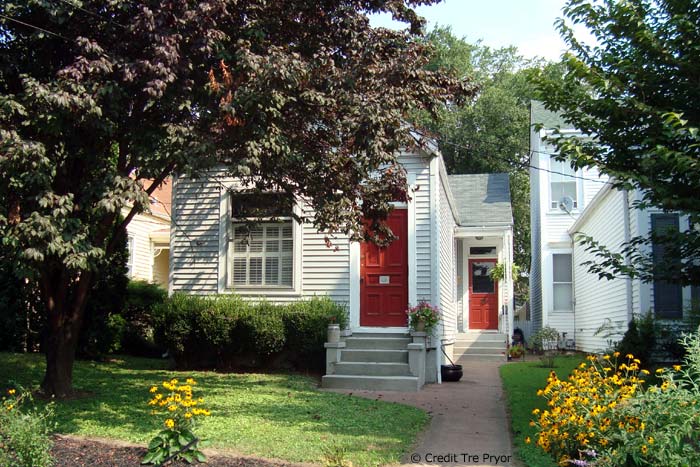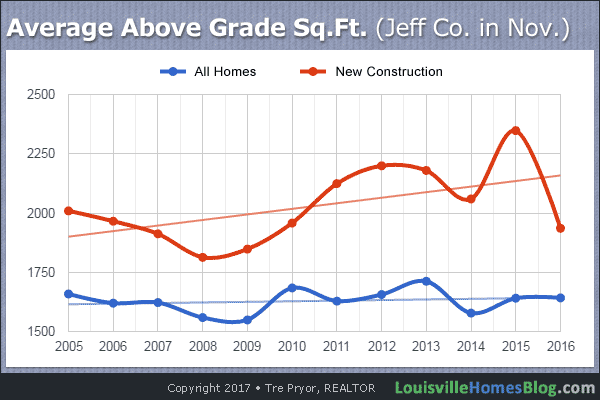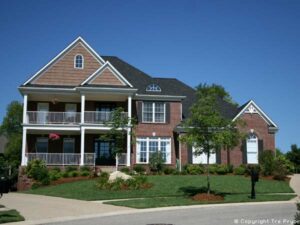With the current national obsession with tiny houses and downsizing, I wanted to see how Louisville is responding. Personally, I haven’t sold a single tiny house, not that there’s a big market for them here. But what’s more, I haven’t even seen one driving around Louisville. Have you?

Is Louisville just behind the trend or is the so-called phenomenon overblown and likely a fad? What exactly are average Louisville home sizes?
One thing I could learn is how to have home sizes have changed over the years. Sorting through megabytes of data is much easier with today’s technology so I dove right in.
I decided to go back and see what the average Louisville home sizes have been doing in the past decade. I’m only comparing above-grade, square footage only. While I was at it, I also decided to track Louisville’s new construction home sizes while I was at it.
Before viewing the results, I wondered if Louisville homes were shrinking or holding steady. What I found was more than a bit surprising.
Average Louisville Home Sizes
Due to limitations for full data download from our MLS, I needed a month with less than 1,000 sales. Settling on November, I went back in time and grabbed records back to 2005. This would allow me to see how the housing recession affected the data, if at all.
This is only considering homes that exchanged hands during the month. Here are the results!

The average size of the home in Louisville has stayed close to 1,600 square feet for almost all of the years surveyed. The trend line is almost completely flat.
This is considering all homes, whether we’re talking the cute, little shotgun homes in Germantown, the 1960 split-levels in Jeffersontown, or Louisville’s mansions scattered throughout Anchorage and Prospect.
When looking at the red lines on the chart we see that newer homes have been increasing in size over time. We see more fluctuation.
As we headed into the housing recession, new construction homes were growing smaller in size. As the recession hit in 2008, remarkably those new homes that were being built were actually larger. Fewer homes but bigger just the same.
Now, look at the last data point on the new construction line.
The average size of homes sold during November 2015 was 2,348 square feet. One year later, that number dropped to just 1,936. Could this be Louisville catching tiny house fever? Or is it simply a market correction?
We know that as more and more Baby Boomers retire, they are downsizing their housing accommodations. This will greatly affect these numbers.
It’s interesting to see how things will play out here in Louisville as new construction is still working to reach pre-recession volumes.



